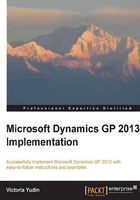
Structure of Dynamics GP – modules and series
Microsoft Dynamics GP is a modular application. In this case, a module refers to a set of related functionality within the application. A module can be as robust as Payables Management (typically referred to as Accounts Payable), which contains all the details about your vendor transactions, has over fifty windows and tables, and hundreds of stored procedures. A module can also be as narrow in scope as Customer/Vendor Consolidations, which allows you to define relationships between vendors and customers and only has a few windows, tables, and stored procedures.
When implemented together, the Dynamics GP modules integrate to provide a fully functional ERP (Enterprise Resource Planning) application. There are over one hundred modules available for Dynamics GP and it is sometimes tempting to simply install them all, or install every module included in your licensing. Don't do this! Installing modules that you do not need may result in adverse behavior in other modules, and may make administration of Dynamics GP more cumbersome than it needs to be. Best practice is to keep it as simple as possible, plan for and implement only the modules you need.
In Dynamics GP, modules are grouped into series by related functionality. For example: Payables Management, Purchase Order Processing, Purchase Order Enhancements, and Scheduled Payments modules all deal with vendor transactions and are grouped into the Purchasing series. Navigation in Dynamics GP is performed by series, as are many setup and maintenance tasks.